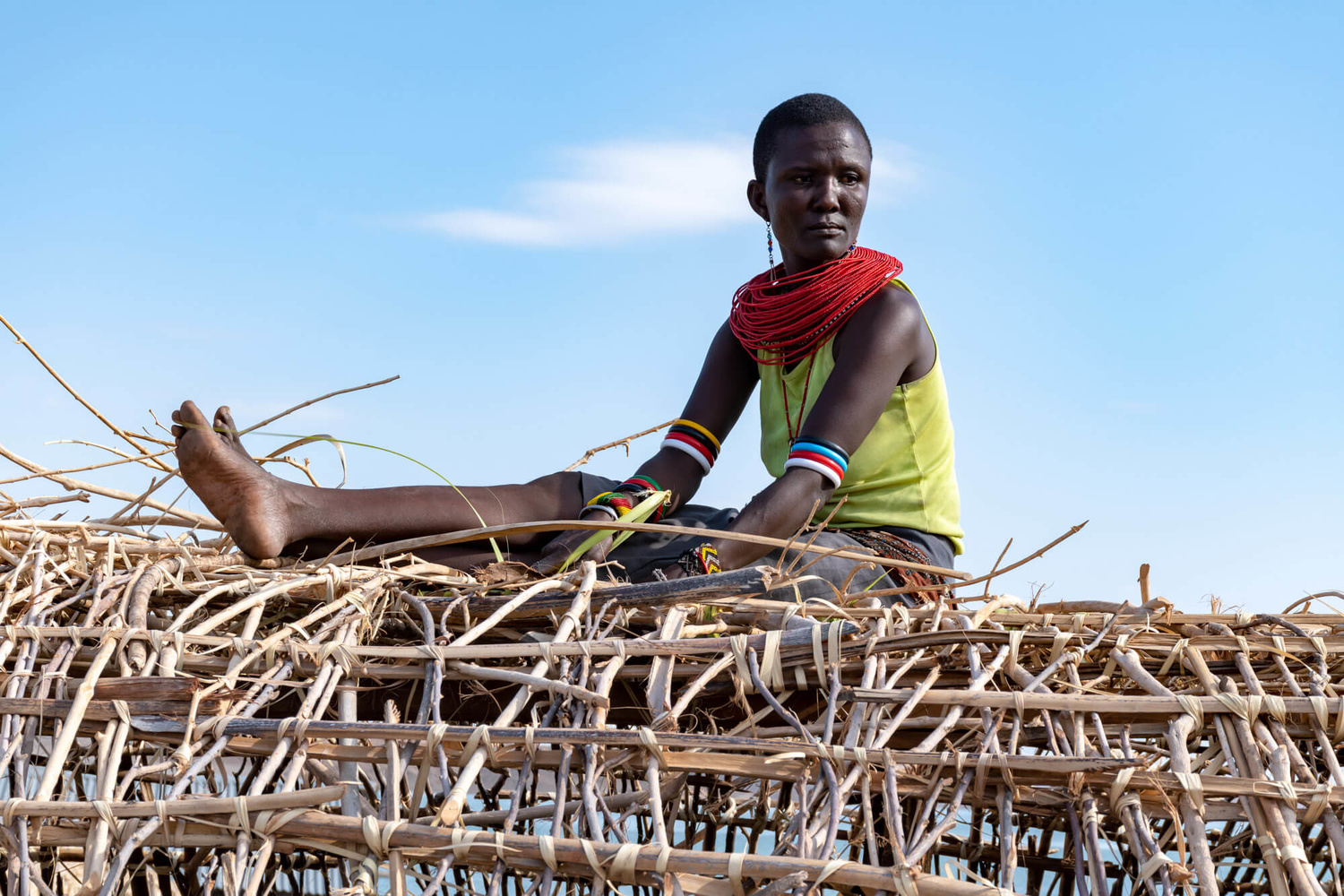All About The Turkana Lake
Our trip to Kenya takes us into the arid lands of the north of the country to meet the inhabitants of the desert and mainly the Turkana people and the El-Molo fishermen.
On the way to Lake Turkana
On arrival in Marsabit, go to the market. We are making some provisions of fruits and vegetables that the inhabitants of Turkana have asked our guide to bring. Indeed, in the north, resources are very limited. The stalls are well stocked: pineapples, papayas, passion fruit, watermelons, avocados, tomatoes... We spend the night at the hotel Le Firmine.
Chalbi desert
The next day, we leave the asphalt strip that from Marsabit joins Ethiopia to go to the North-West and the desert of Chalbi which we cross by the northern track. At this time, in September, the weather is dry, and we take the trail that runs along the northern part of the Chalbi depression. In the rainy season, the track is not practicable, you must go through the track at the top of the escarpment.
Dust and heat and make many mirages in this arid region swept by the wind. Here, nothing stops the wind and many tornadoes of different heights are formed. We pass through some villages. In Maikana, we stop at a small bistro. The landscape is austere, desert, stony and the temperature hovers around 40°.
Many camps and small village succeed each other before the arrival in North Horr lost in the rocks where only a few sources offer to the palm trees the possibility of coloring green the gradations of brown stones.
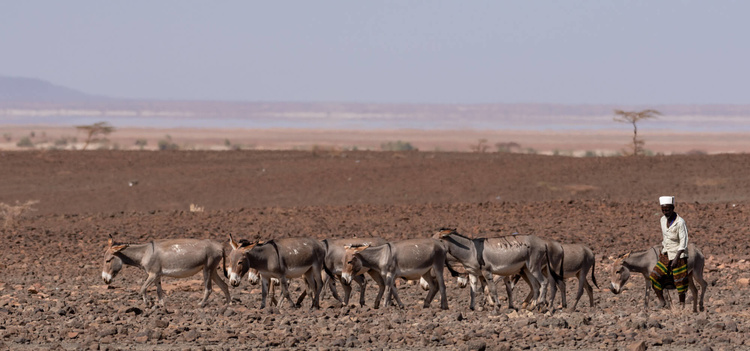
From North Horr, the winding track goes back towards the South-West in a rough mineral landscape, we cross some Turkana camps or shepherds with their herd looking for some pasture.
As we approach Lake Turkana, the road is very hilly. At each summit, a new viewpoint is offered to us.
Lake Turkana
This lake is 300 km wide and 50 km wide, its northern end plunges into Ethiopia, fed by the large Omo River which takes its source in the highlands near Addis Ababa. The algae that thrive in its waters change color regularly, changing from charcoal gray to Delf blue depending on the rapid passage of clouds, but its surface generally retains its bright green under the sun’s rays.
The contrast is striking between the black pebbles that surround it and the jade color of its waters. Of course, as soon as I arrive, I put my feet in the water, it is delicious and the desire to bite a head itches me, but I am quickly cooled by seeing a huge crocodile not very far away. The Turkana is home to the world’s largest crocodile population. They feed mostly fish but exceptionally can eat large mammals see humans!
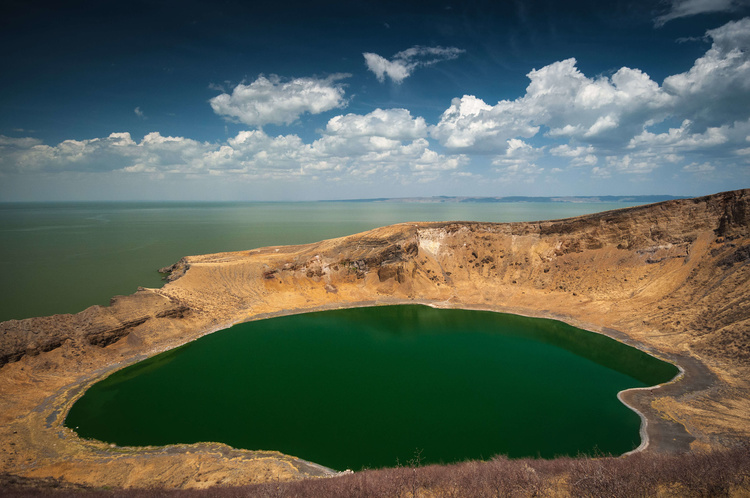
The tribe of the Turkanas
We settled in the Palm Shade resort in the village of Loiyangalani, a small town close to the lake. On the main street we meet people from different tribes Turkana, El-Molo, Samburu, Rendille and Somali. All live in harmony (or almost, there are often stories about water resources, grazing and cattle theft) and even though some cultures differ, the tribes are now linked by marriage.
The Turkana are desert dwellers, enduring and fiercely traditionalist, they lead a lifestyle similar to that of their cousins Masai and Samburu. They are the third-largest ethnic group in the country, after the Kalenjin and the Luo. Although the turkanas live near the lake, they do not fish, whereas fish would be a vital protein source in times of drought.
Milk and curd blood are the basic diet. The turkanas are breeders and cattle provide their skins for sandals, sleeping and blankets of the huts for rain, the horns to place the snuff. The dromedary holds a primordial place in the economy of turkanas, goats and sheep are reserved for guests and minor rites. In the rainy season, women grow millet and squash on their own plots near streams.
In and around the village, it is not always easy to take pictures of them. They are afraid of photos. The belief that a photo captures part of their soul is still very much alive.
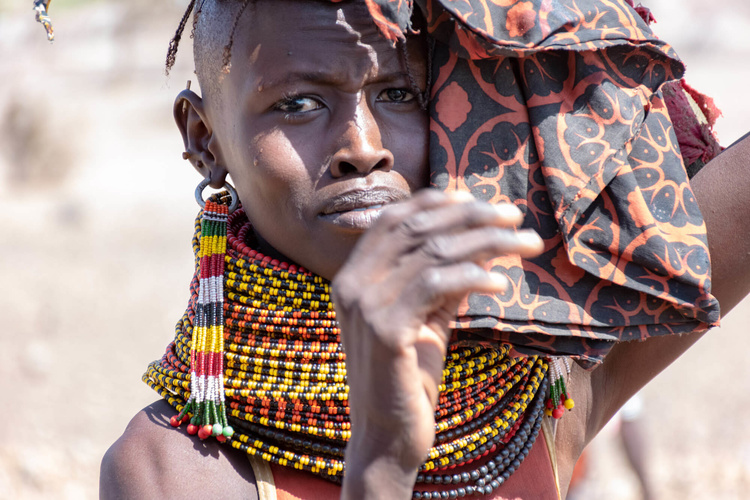
Some traditions
- Women wear a huge necklace of pearls and colors to indicate that they are reserved for a man.
- One Turkana woman costs a lot, 120 goats and 16 dromedaries. Men can have several women if they can afford to pay the dowries.
- For men, the traditional war gear consists of a spear, a club, a bracelet blade, a finger knife and a shield made of buffalo skin, giraffe or hippopotamus.
We return to the hotel, where a seminar is taking place to discuss a future wind turbine project in the area. Here, the wind is omnipresent. Soldiers armed with kalashnikovs frame all this small world. And for dinner, we meet in front of a plate of tilapia, the fish from the lake, accompanied by rice, cabbages and kalashnikovs laid on chairs!
The El-Molo tribe
This night, it was very hot and at 22h the generator is switched off, and therefore the fans turn off! Fortunately, the wind started blowing as every night, a very strong wind, we made drafts, and so we could benefit from another fan. We had a good breakfast and this morning we went to a village on the shores of Lake Turkana. El-Molo live here. They are the smallest ethnic group in the country and fear the disappearance of their language. It was about 1,000 people in the last census of 2019. It is also the poorest ethnic group in Kenya. El-Molo still live in small igloo huts made of acacia trees and palm trees, built on the shores of Lake Turkana. They are slowly being replaced by concrete houses.
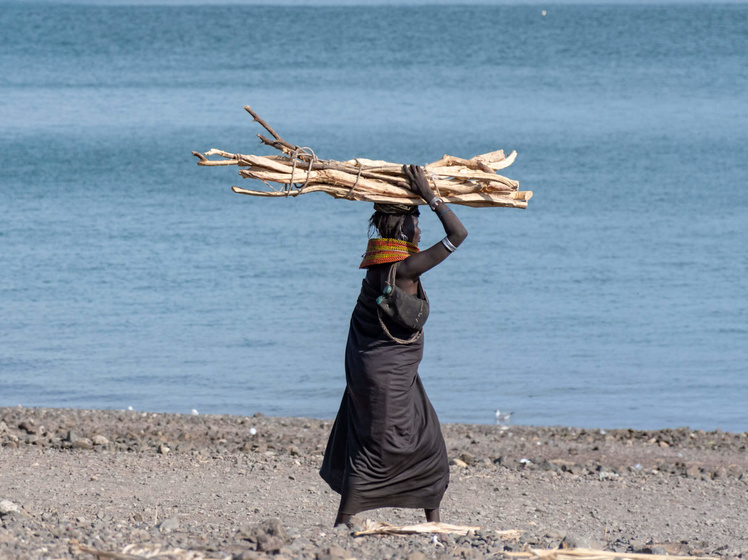
Three years ago, the lake’s water rose sharply due to extreme rainfall on watersheds, linked to global warming, increased soil runoff related to deforestation and agriculture but also tectonic movements. The El-Molo saw their only freshwater pipeline disappear along with their ancestors' burial mounds. The waters even ended up closing on the road, isolating the inhabitants on an island in the middle of the lake. This unexpected rise of the lake has fragmented the tribe. Those who stayed, have a very hard life. Some children are denied schooling because parents cannot afford the boat to get there.
Our guide lives in the village, and we walk with him from hut to meet the inhabitants. Fishermen, women, children and the marabout. Fish is their main resource, and it is drying up everywhere. Unable to access fresh water, the El-Molo are forced to drink from Turkana, Africa’s saltiest lake. “We often have diarrhea, it is salty and damages our teeth and hair”.
Some women wear leaf-shaped earrings, which indicates that they are married.
Roto island
Our guide lives in the village, and we walk with him from hut to hut Then, we embark to go on the island opposite, Roto island. Small crossing of 10 minutes. On this sacred island, there are 4 sanctuaries, still used today.
- The Marle Shrine used for ceremonies to curse enemy tribes, pray for rain and protect themselves from snake bites.
- The Orikala sanctuary used for sacrifice to increase luck in hippopotamus hunting.
- The Origaltite Shrine is used to bless infertile women for conception.
- The Orisole Sanctuary is used to pray for protection from calamities such as epidemics and to curse troublemakers in the community
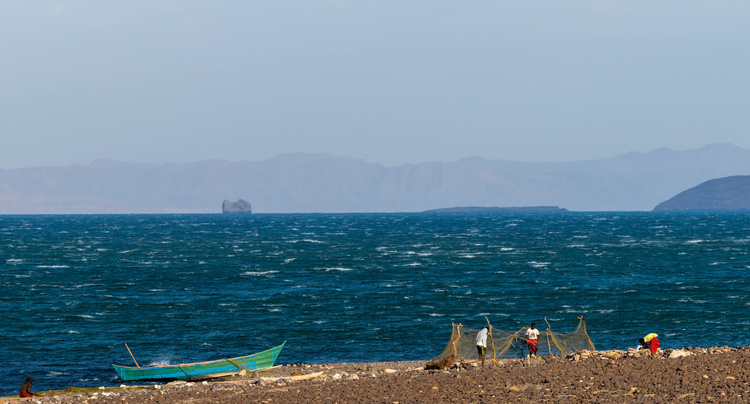
To Maralal
We leave the north, the road first follows the shores of the lake and crosses some villages Turkanas then gradually the track slips into the mountain folds of the rift valley to South Horr. The landscape becomes more sandy, acacias replace the pebbles. We meet some ostriches, dik dik and giraffe antelopes. The Turkanas are replaced by the Samburus.
Travel made in September 2022.

